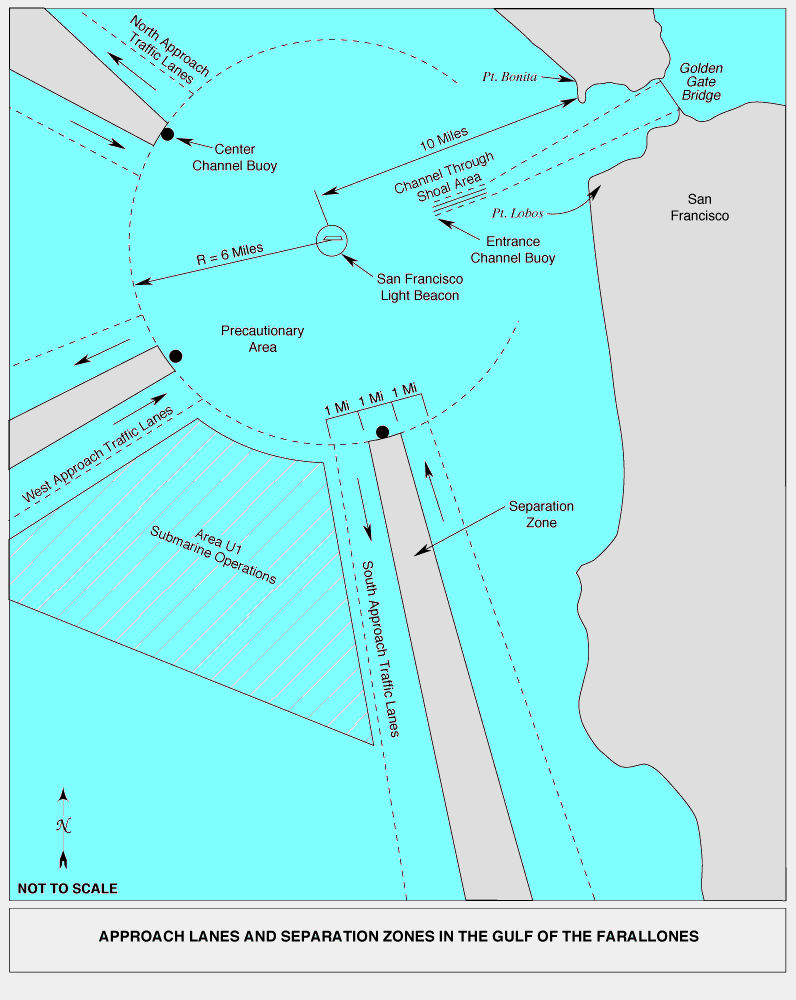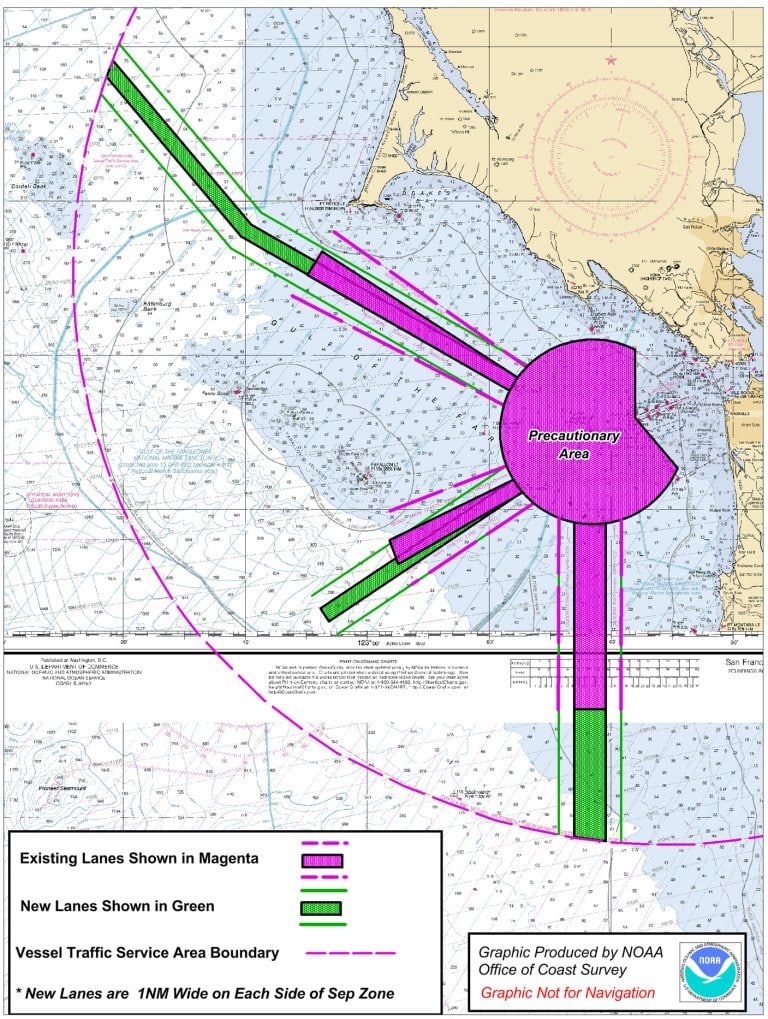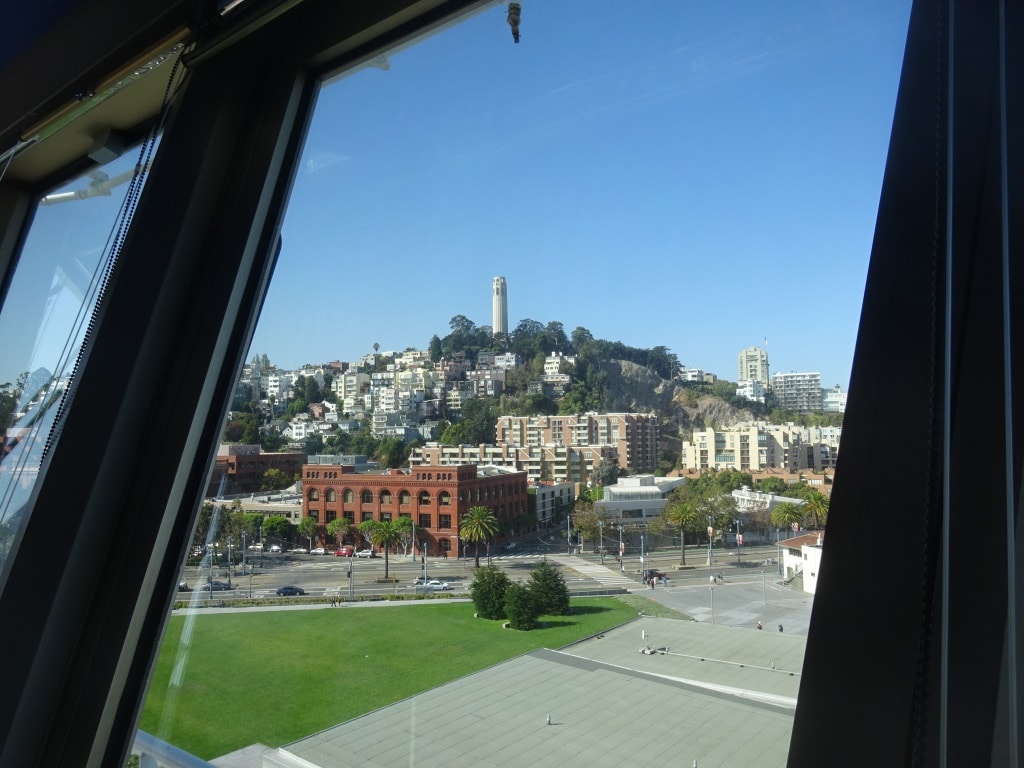Sailing into San Francisco is quite a complicated business. Because the traffic going in is coming from the North, the West and the South, ships are approaching under three different angles. Then there is the outbound traffic from the Golden Gate also descending upon the pilot station and so you have ships from four sides; and all in a hurry. In the weekend the problem can be exacerbated by six pack navigators milling around as well. The bay and approaches to San Francisco are not for the faint hearted to sail, due to the changing winds and strong current so most of those who sail around are very competent: but on high days and holidays we always come across sail boats whose skippers have had more focus on “Miller Time” than on the Rules of the Road. As fog can be quite regular over here it does not stop the majority of sailing boats from going out. They all hang a radar reflector in the mast and think that solves the problems of collision. Then they hear a fog horn and decide to go and have a look. On the radar of the big ship, it then looks as if a fleet of super tankers is descending on the ship as these reflectors give a big response. For a small sailing boat a passing distance of 100 feet is a lot, for the commercial ships it is not. Now any ship over 300 tons has AIS and that helps identifying if a ship is big or small, but you are never sure as a ship might have the AIS turned off (navy ships are very good at doing that) or a small sailing boat might have that as well. Quite often with the latter the AIS has then wrongly been programmed and that gives challenges as well.
Most of us love to go to San Francisco but at the same time we always have some trepidation while doing it. Today we had two major advantages: a. it was a Tuesday which eliminated the presence of small boats almost completely and b. we had very good visibility as it was relatively cold weather.
The approach to the pilot station starts out far, far away. To regulate the traffic, the maritime authorities have instigated a very elaborate Vessel Traffic Separation Scheme (VTS or VTSS). From almost 40 miles away, the ships are already lined up when coming towards the San Francisco sea buoy and those going out from the port will have to stay in the system for a long distance as well. No corner cutting and no bypassing. It also forces ships that do not call at SFO to stay further out, as otherwise they have to comply with the system. Altogether it makes it a lot safer.
Apart from human tin cans floating around, we also have extensive mammal life in the area and recently the lanes have been extended taking into consideration as well the normal track routes of the whales. The whole thing is monitored by a calling in system, which tracks the ships and provides navigational information of what the other ships are doing.

The pilot boat can be anywhere in this precautionary area but sits normally somewhere near the San Francisco Light Beacon. Depending on where the ship is going, it will come closer after the ship will have made a lee.
The area in front of the approaches to the Golden Gate is called the Gulf of the Farrallones and it is basically one big traffic zone. In the center is the precautionary area which means that you should not be there if you do not have to; the Rules of the Road might be reduced in direct application while taking over the pilot and you should be extra alert for other ships as they have to align themselves with the inbound or outbound tracks around the precautionary area.
Once the pilot is on board, the VTSS is reduced to an inbound and outbound lane leading under the Lions Gate Bridge and into the bay. Then it splits up in a route going to the port of SFO on the South side of the bay and to Oakland on the north side of the bay. We went to the South side, to pier 27, which is the cruise terminal of the port. In the past we always docked at Pier 35 (which is closer to Fisherman’s wharf) but that one was today occupied by an Apartment of the Seas and thus we went to 27. A functional but very bare and stark building which looks like a shed and has nothing of the old elaborate terminals from the ocean liner days of the 1930’s. But it can handle the turnover of large size cruise ships.
The guests had a glorious day to see the sights and those who wanted to walk only had to cross the street as Coit tower on Telegraph hill was towering right above us.
We stayed until 17.00 hrs. and thus the guests could see themselves sailing under the Golden Gate Bridge before dinner started. We like to plan things properly. Tomorrow we are in Avalon for an afternoon and evening call. It is a tender port, so we are all praying for calm seas.



October 4, 2017 at 3:18 pm
Oops!!! Not Lions gate (Vancouver) but Golden Gate (San Francisco). Great pics. There is a web cam at the Sausalito Yacht Club that oversees the San Francisco Skyline and were able to watch you arrive and depart.. Very majestic! Glad we gave you and guests good weather. Enjoy Catalina Island. Another of my favorite stops — 26 Miles Across The Sea — Sunny Catalina is waitin’ for me —-and on the song goes. Yes I am that old. :>)
October 4, 2017 at 4:31 pm
Captain Albert
In your paragraph that starts once the pilot is onboard you mention passing under the Lions Gate bridge ?
Looking forward to meeting you again on
Nieuw Statendam
October 5, 2017 at 11:19 am
Thank you for reading my blog.
Good catch.
I have sailed under too many bridges in my life. Especially when they look similar, although the Lions Gate in Vancouver is green and the Golden gate is red.
best regards
Capt. Albert
October 5, 2017 at 12:45 pm
very interesting. When I sailed into San Francisco from New Zealand on the P & O liner ‘Orsova” Feb. 14th, 1957 was dense fog. Saw absolutely nothing, including the bridge. Fog horns going off constantly. Weren’t sure we were even moving but eventually looked straight down and saw we were alongside the pier. Amazing it could be done safely before the present technology.
October 5, 2017 at 8:52 pm
While writing about the “Lions Gate” bridge ….
One morning when waiting for the illustrious ms Amsterdam, who never came, the bottom of the Lions Gate bridge changed into a red colour. Here, I thought the city had installed some fancy lighting works, which would have been a splendid idea indeed to welcome ships in and send them out with a goodbye.
A little lady in charge of the buses in the Terminal smiled and told me that that was the light of the rising sun reflected on the bridge! What trickery nature can play on an innocent mind 🙂
October 8, 2017 at 3:01 pm
I was on that Apartment of the Seas when you arrived! Sorry to take your spot! But if you think Explorer of the Seas was big what would you call Royal Caribbean’s newest monsters! Thank you for explaining how our master brought us in. When we departed, we were on an upper deck and the clearance between our navigation mast the the bridge decking looked sooo close! How much clearance did the Nieuw Amsterdam have?
October 8, 2017 at 8:38 pm
Thank you for reading my blog.
It always looks very close when you look from under the mast upwards to the bridge. The Explorer of the Seas is a little bit higher than
the Nieuw Amsterdam as she has two extra decks compared to the NA. The clearance of the Golden Gate is 67 meters at high water and the
NA has a top height of 57 meters at its least draft. So we had still 30 feet to play with. I guess for the Explorer it would have been
about 16 feet less, accounting for the two extra decks.
Best regards
Capt. Albert